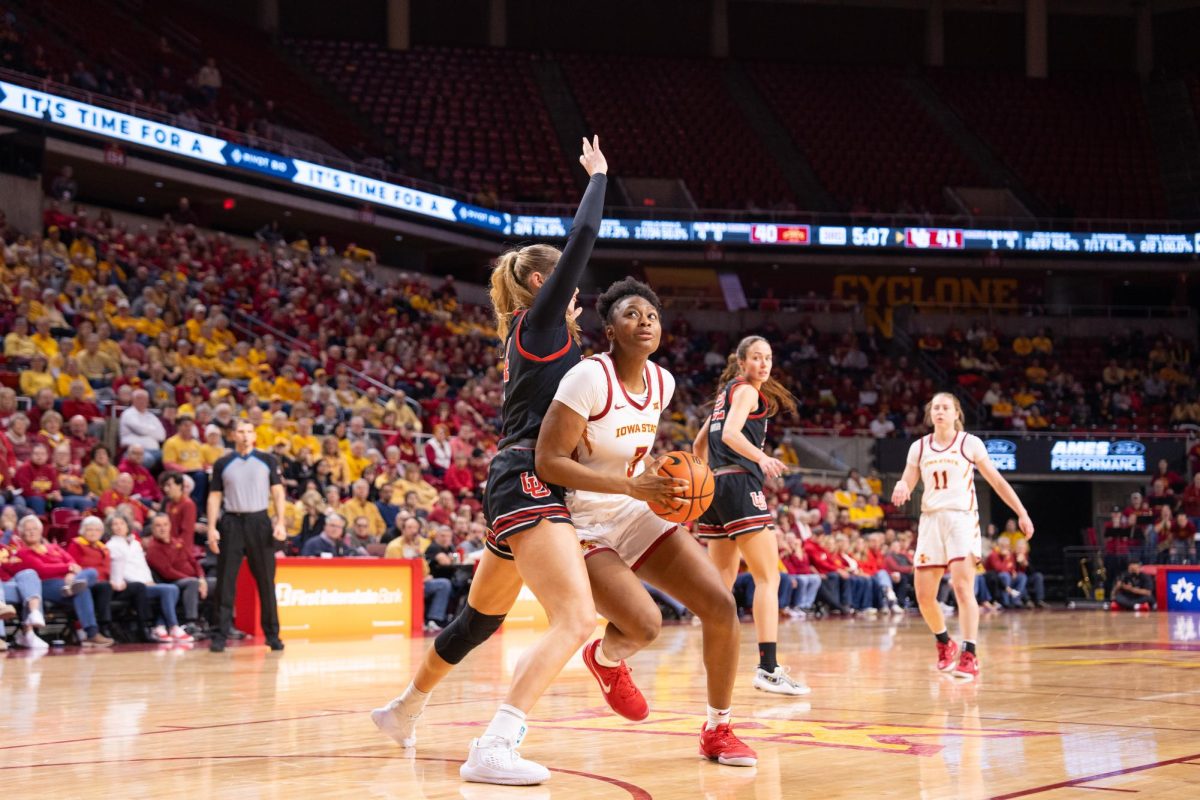Redefining Risque
February 20, 2003
When “Cabaret” vamp Sally Bowles asks “What good is sitting alone in your room?” you’d better have a good answer.
The bright lights and show tunes of Broadway’s “Cabaret” will come to Stephens Auditorium Thursday night. The touring production takes the musical’s traditional love story and modernizes it with slinky costumes and racy choreography.
The story of “Cabaret” tells the relationship between an English girl, Sally Bowles, and an American writer, Cliff Bradshaw. Cliff first sees Sally performing at a nightclub called the Kit Kat Club, and eventually they fall in love.
“Cabaret” is set in 1930s Berlin when Adolf Hitler’s Third Reich was starting to gain power, and the musical’s characters reflect the social awareness of Berlin’s citizens at the time, says Hannah McDonald, press agent for the “Cabaret” tour.
“Sally is living a [life of pleasure] with her head in the sand, ignoring the political and social downfall going on around her,” McDonald says.
“Cliff is an idealist American writer who comes to Berlin for inspiration and falls under the charm of the Kit Kat Club,” McDonald says. “He then wakes up to the politics and is uncomfortable with them.”
“Cabaret” is based on a short story by Christopher Isherwood, taken from real-life observations the author made in Berlin between 1929 and 1932.
The music and lyrics were written by John Kander and Fred Ebb, who also wrote the musical “Chicago.”
“It’s a similar story to ‘Chicago,'” says Sara Barr, director of marketing for the Iowa State Center. “The material of ‘Cabaret’ is going to be a little bit darker and heavier than ‘Chicago.'”
Barr attributes this to the time period, which is just before the breakout of World War II.
In 1998, a revival of “Cabaret” was created for Broadway, directed by Sam Mendes, director of “American Beauty.”
“Mendes revamped the old style ‘Cabaret’ from the 1930s and made it more evocative,” Barr says.
The reinvention of the classic musical was wildly popular during its Broadway run, earning four Tony awards in 1998, including the award for best revival-musical.
This production has different costumes and content from the original Broadway show and the 1972 film starring Liza Minnelli, McDonald says. The costumes are modernized and skimpier than before.
“The Kit Kat girls will be dressed scantily in underwear,” she says. “The costumes are based on actual clothing worn in that period.”
Kelly Bartlett, senior in performing arts, says the choreographers bring to life what the costume and scenery designers are creating on the stage.
“It will be a much grittier and darker interpretation of ‘Cabaret,”‘ Bartlett says. “The grittiness contained in this production could not have been done in the ’60s.”
Barr says Mendes’s restyling of the musical reflects the tastes of modern theatergoers.
“When musicals are revised,” Barr says, “[The director] tries to tailor it to the new audiences that are enjoying theater.”
Barr says Mendes has done an excellent job at reinventing “Cabaret” for modern times.
“[Mendes] has taken this musical to a different level for the newer audiences,” she says.
McDonald says the modern version will reach a broader audience than a traditional Broadway musical.
The production is not explicit, she says, but it is racy.
“The content is grittier and it is certainly a powerful production…definitely suitable for mature audiences,” McDonald says.
“The dancing adds a movement and visual element that enhances the atmosphere of the Kit Kat Club,” Bartlett says.
Janice Baker, assistant professor of health and human performance, says the choreography is suggestive but reflective of life in Germany under Nazi control.
“It’s historically very reflective of a grotesque time we should all remember and not repeat,” she says.
What: “Cabaret”
Where: Stephens Auditorium
When: 7:30 p.m. Thursday
Cost: $13.50-$19.50 students, $25.50-$37.50 public






